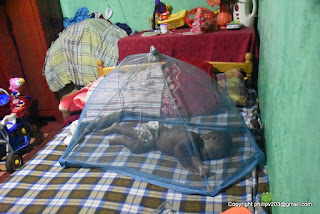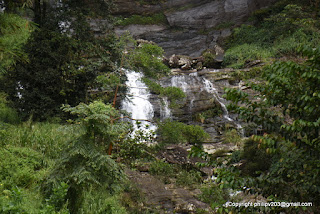I was a school boy studying in the
primary school in the late 1940's. My parents had built a new house at my
mother's ancestral village at Thondamannaru in the north of Sri-lanka. The
house had its front door facing the east. It gave us a gorgeous view of the
sunrise. The early morning sun coming out of the eastern horizon was a
wonderful sight to us children. Long before the sunrise, the Pillayar temple
next door would have started it's morning "poosai". The sound of the
tinkling bells with sound of chanting of ‘manthras’ was a part of the morning
chorus which woke us up.
On this particular day, I was
awakened by a sound in the front veranda of our house, long before the dawn
chorus. I saw that the front door was open and I crept out. I found my mother
and a female neighbor looking to-wards the eastern horizon. There in the
eastern horizon was something which looked like a "vilakku-maaru"- a
fan shaped broom made of ‘ekel’ shining in full glory.
Houses are traditionally built
facing the east. From the front verandah of the house, above the ‘cadjan’ fence
surrounding the house, we could always see the rising sun in all it's glory
every day. On this day, long before the sunrise we beheld a wonderful sight on
the eastern horizon. There was a multiple array of dark yellowish rays, rising
out of the eastern horizon. These rays all seemed to be converging towards a
point below the eastern horizon. The rays kept ascending towards the zenith of
the sky slowly. Sometime later we saw the point, towards which these rays were
directed also rising out of the eastern horizon. The point seemed to be like a
ball of fire from which the rays radiated. It was an astounding sight.
We could now see the eastern horizon
lighting up with the rising sun. As the light of the rising sun increased the
comets trails gradually faded. After sometime the ball of fire of the comet
also faded. The red sun in all its glory came out of the horizon. It seemed to
say that the earlier glory of the comet was nothing compared to its effulgence.
My mother and the neighbor were
talking in whispers looking at the awful sight. In their minds the village
superstitions about calamities on a big scale were most probably uppermost. My
mother with her Christian education and faith probably was not much influenced
by these portents. Our female neighbor seeped in the village Hindu traditions
was very silent.
For me it was a wonderful revelation
of nature. I carry its memory to this day. I never saw a comet to equal it in
my later life. I remember the announcement of the death of Mahathma Gandhi after
this event. Quite a lot of people in the village correlated these two events.
An accordion started to play Song
https://youtu.be/uROOv1CHwk4?list=RD8BGYuH9Vxc4








































